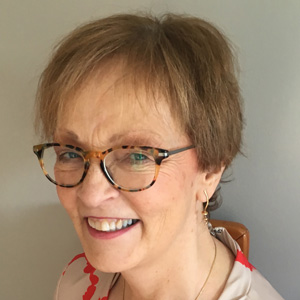How the infodemic is changing the way we look at evidence
Intro: When COVID-19 struck, Scottish Intercollegiate Guidelines Network (SIGN) had an obligation to support healthcare professionals in Scotland with contextualised guidance on the diagnosis and treatment of a new and emerging disease. Angela Timoney, chair of SIGN, explains the challenge of developing evidence-based guidance with very little high-quality evidence.
The scale and pace of the COVID-19 pandemic has presented numerous challenges to healthcare professionals. It has also presented a new type of problem. The so-called infodemic is almost a virus in its own right, with the endless circulation of information and misinformation from different sources and experts, causing hope and confusion on an almost daily basis, and spreading with great speed through social media and 24-hour news. In fact, the World Health Organization has said that the COVID-19 infodemic is almost as dangerous as the pandemic itself.
Some steady voices, including the Centre for Evidence-based Medicine and Cochrane, have helped filter this information overload. Healthcare Improvement Scotland is providing expertise in evaluating evidence and highlighting the most reliable sources. Internationally, SIGN has been involved in a COVID-19 taskforce as part of Guidelines International Network (GIN) to reduce duplication of effort. So, lots of information – but is there evidence?
The need to adapt
Indeed, there is plenty of evidence – it comes thick and fast, but it’s not the robust evidence we need for clinical guidance. We like large, randomised controlled trials; currently, most evidence related to COVID-19 is retrospective and observational at best. It’s fast moving, incomplete and often from populations that don’t always align with ours. The superseding nature means that, even with good intentions, outdated clinical guidance can actually do more harm.
Over the past 28 years, SIGN has developed an international reputation for producing highly regarded clinical guidelines. SIGN has worked to a robust methodology during this time, but we quickly realised that the lack of high-quality evidence related to COVID-19 wouldn’t fit this mould – uncomfortable as it was, we had to adapt to ensure that our contribution would be meaningful and timely.
Initially, we worked with the National Institute for Health and Care Excellence (NICE) to learn from their development of rapid ‘living’ guidelines completed within one week. We have since gone on to develop a guideline on Managing the long-term effects of COVID-19 with NICE and the Royal College of General Practitioners. We also collaborated with the University of Glasgow to develop a rapid review to support colleagues in general practice.
We are supporting the Scottish Government’s COVID-19 Clinical Guidance Cell, a large multidisciplinary group acting on behalf of Chief Medical Officer Dr Gregor Smith to develop rapid, high-quality guidance. Dr Smith acknowledged our role: ‘Your willingness to collaborate has resulted in a process that is responsive to clinicians’ need for guidance. It will also ensure that Scotland’s clinical guidance will continue to be highly regarded, and provide our healthcare professionals with much needed support.’
Learning for the future
There’s a common word in all of this: ‘rapid’. In a short space of time, we’ve learnt a great deal that we can apply to future guideline development, while retaining our reputation. It is easy to say that we must not ignore the good in search of the perfect, but in the middle of the storm, the real challenge was determining not if it was good, but whether it was ‘good enough’. History will determine if we got that balance right, but it feels that we have, and this is reflected in feedback from others.
We’ve seen how guidance can be developed more quickly and without physical meetings, and we’ve also seen how our methodology remains valid. It is still necessary to have debate among multidisciplinary healthcare professionals and involvement from patient and public involvement groups and representatives.
We have learnt a few lessons and, as a result, have developed a methodology for ’rapid reviews’ that others might find useful. We also extended our expertise to producing patient booklets based on our guidelines. By developing our guidelines into an accessible format, we are empowering people to take part in decisions about their treatment and care. This contributes to the Realistic Medicine approach in Scotland, which aims to enable meaningful conversations between patients and clinicians.
Whether it is producing rapid guidelines, patient booklets, pinpointing where more research is needed or highlighting the most reliable resources, SIGN’s role in Scotland’s response to COVID-19 has been vital – by sticking to our founding principles and robust methodology, we continue to be a guiding light for healthcare professionals in Scotland throughout the crisis. We look forward to finding ways that we can use this knowledge and experience to benefit other areas of our work in the future.
Author
Professor Angela Timoney, FRPharmS, FRCPEdin
Disclaimer
The views expressed in this World EBHC Day Blog, as well as any errors or omissions, are the sole responsibility of the author and do not represent the views of the World EBHC Day Steering Committee, Official Partners or Sponsors; nor does it imply endorsement by the aforementioned parties.

Angela Timoney is chair of the Scottish Intercollegiate Guidelines Network (SIGN) Council. SIGN develops and disseminates internationally regarded clinical guidelines to support practice in NHS Scotland. Angela is currently director of pharmacy and medicines for NHS Lothian and from 2011 to 2014, she chaired the Scottish Medicines Consortium, the group in Scotland that undertakes appraisal of the clinical- and cost-effectiveness of new medicines.